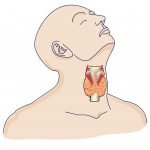WNF: Global Naturopathic Terminology
Naturopathic News
Tina Hausser, Heilpraktiker
 Language is the key that opens doors to global cultures, people, and nations. In times of globalization it is fundamental to communicate with each other on the basis of language. Words, as a tool of a language, unite people globally and allow international understanding, exchange of knowledge, and – in the professional field – the clarification of technical terms that may be used differently in different professions.
Language is the key that opens doors to global cultures, people, and nations. In times of globalization it is fundamental to communicate with each other on the basis of language. Words, as a tool of a language, unite people globally and allow international understanding, exchange of knowledge, and – in the professional field – the clarification of technical terms that may be used differently in different professions.
Every profession has specific technical terms that assist in unifying their profession and that clarify how practitioners approach their work. Using consistent terminology is required for teaching within the profession and for exchanging technical knowledge, both within a profession and with other professions.
In science, terminology plays a crucial role. For example, every system of medicine has its own terminology as well as uses a common language of medicine to guarantee understanding and communication on the professional level.
WNF Naturopathic Terminology Project
In 2017 the World Naturopathic Federation (WNF), in response to an identified need outlined by the World Health Organization (WHO), launched the WNF Naturopathic Terminology Project. Its role is to identify and define the core naturopathic terms that are used both in the naturopathic profession and in other healthcare professions, with the aim of facilitating interprofessional collaboration (IPC) with other health professions.
Background
Naturopathy has a long history and is considered a system of traditional medicine in Europe. Many terms used within the naturopathic profession etymologically originated from the Latin and Greek language. Terms used by philosophers and physicians in old Greece form part of the traditional wisdom that has been developed into modern naturopathic practice, such as the naturopathic philosophy of Holism, which is also included in the naturopathic principle of Treat the Whole Person and the naturopathic theory of Integration of the Individual.
Terms that form the naturopathic principle Vis Medicatrix Naturae – or the naturopathic theory Vis Vitalis – have been used in medicine since the epoch of Hippocrates and are based on the philosophy of Vitalism. All of these terms originated in Latin or Greek language, the common language of traditional medicine in Europe and later of conventional medicine globally.
In the late 1800s, the practice of naturopathy extended into North America, Western Pacific, and India. Today, naturopathy / naturopathic medicine is practiced in over 80 countries, spanning all world regions.
Over time, naturopathic terms have been translated into English language and became part of the naturopathic terminology and practice, developed and applied by health professionals, such as the naturopathic principle Wellbeing/Wellness.
Process
When the WNF formed in 2014, one of its initial tasks was to determine how naturopathy / naturopathic medicine was practiced throughout the world and to see whether language and terms were consistent globally. The results of a global survey, published in the WNF World Federation Report (June 2015),1 revealed that the underlying roots of naturopathy, the terms used, the scope of practice, and the theories that guide assessment and treatment are extremely similar around the world.
After surveying the profession, the WNF sent a second survey in February of 2016. This survey was sent to 85 naturopathic institutions from 49 countries. The results of this survey echoed the first, that is, that the roots of naturopathy are consistent and are taught globally in a similar way. Those results were published in the WNF Naturopathic Roots Report (2016).2
As a consequence of the consistency between the 2 surveys, the WNF created a White Paper,3 outlining the philosophies, principles, and theories that substantiate the scope of naturopathic practice and define the profession globally.
The White Paper: Naturopathic Philosophies, Principles and Theories3 is a 100-page document that details the roots of the naturopathic profession. Apart from the historical overview, it includes the definition of the profession and clarifies the origin, contributors, and practical use of naturopathic philosophies, principles, and theories, including naturopathic terms. As mentioned, technical terms are useful for recognition, definition, and unifying a profession. In the WNF White Paper, naturopathic terms are described in detail including historical origin, contributors, and application in practice today. The White Paper was approved by the global naturopathic profession in September 2017 and will serve as an ongoing valuable resource for naturopathic educational institutions that teach naturopathic history, philosophy, and principles. It will also be a great reference for naturopathic practitioners who want to learn more about the foundation of the naturopathic profession.
The WNF Terminology Project follows from the WNF White Paper. The goal is to provide a more concise document that will allow for better interprofessional collaboration with other systems of healthcare, and it will serve as a guide for those in government (or other non-governmental groups) who desire a better understanding of naturopathic terminology.
WNF Terminology Subcommittee
The WNF Terminology Subcommittee is composed of WNF members that have expertise in the foundational basis of naturopathy and/or educational formation. The members are actively practicing naturopaths, naturopathic doctors, researchers, and teachers, all with substantial experience in naturopathy / naturopathic medicine.
The committee is made up of 9 experts from all over the globe and 1 volunteer – a naturopathic student from Bastyr University.
The committee members include:
- Chair: Tina Hausser, Heilpraktiker, Naturopath; OCN FENACO (Spain)
- Dhananjay Arankalle, ND; INYGMA (India)
- Flavia Banchieri, Naturopath; ANTHU (Uruguay)
- Melissa Brown, Naturopath; SANA (South Africa)
- Nick DeGroot, ND; CCNM (Canada)
- John Finnel, ND; AANP (USA)
- Daniel Kieffer, Naturopath; CENATHO (France)
- Iva Lloyd, ND; CAND (Canada)
- Stephen Myers, ND, PhD; ANF (Australia)
- Volunteer: Poorna Menon, naturopathic student; Bastyr University (USA)
The committee members span 6 world regions: Africa, Asia, Europe, Latin America, North America, and Western Pacific. This ensures a broad range of input from the naturopathic community and guarantees representation and references of the global naturopathic profession – which is a core concept of the WNF. Ensuring that all projects and committees include representation from multiple world regions is also an important criterion of the WHO, in order to recognize any document engaged by the WNF.
Purpose of the Project
As mentioned, the purpose of the terminology project is to have a global naturopathic document that succinctly clarifies key naturopathic terms. The goal is to establish bridges and increase collaboration with other healthcare professions by providing a clearer understanding of the core naturopathic terms that are used.
Many of the terms identified have been described in detail in the aforementioned WNF White Paper3 with the focus being on historical origins, contributors, and naturopathic practice.
Facilitating IPC is strongly encouraged by the WHO. The contribution of the WNF toward that purpose has been very intensive. For example, they conducted a survey exploring the attitudes of 7 T&CM (Traditional & Complementary Medicine) professions, with the goal of researching the status of IPC globally. Dr Iva Lloyd, President of the WNF, presented the results of that survey at the 71st World Health Assembly of the WHO, in a side meeting that included 2 WHO officials (Dr Zhang Qi and Dr Ruediger Krech).
The WNF Terminology Project is also in response to an initiative requested by the WHO. The WHO has been conducting similar projects aimed at defining professional terms in T&CM systems and facilitating IPC.
Methodology
The first step of the terminology committee members was to identify the key naturopathic terms to be defined. An important criterion was to choose terms that are commonly used in health care and that are defined differently in the various health professions. As mentioned, the focus was on key naturopathic terms that define important aspects of naturopathic philosophies, principles and theories.
The committee approved the following terms to be defined (in alphabetical order): Constitution, Doctor as Teacher, Emunctorology, First Do No Harm, Healing Power of Nature, Health Promotion, Holism, Homeostasis, Naturopathic Assessment, Naturopathic Diagnosis, Naturopathic Treatment, Prevention, Salutogenesis, Toxicity, Therapeutic Hierarchy, Treat The Cause, Treat The Whole Person, Vital Force, and Wellbeing/Wellness.
A Template for the definitions was established and approved by the committee. It includes the following sections: the term, definition, description, application in naturopathic practice, jurisdictional applications (if applicable), synonyms (if existing), antonyms (if existing), etymological origin of the term (if crucial), contributors and copyright, date of approval, and references.
Time Frame
Since its inception in November 2017, the committee has met every 2-3 months. Every committee member was given a number of terms to define as a first draft that was then edited and peer-reviewed by all committee members. Based on the feedback from committee members, second drafts for each definition will be created. Once the terminology committee has completed and approved the definitions of all the terms, the terms will be sent out for review to all WNF members. Consolidated feedback from all WNF members will compose the output document for the final draft.
This draft will then be presented for approval at the March 2019 WNF 3rd General Assembly in Melbourne, Australia.
Conclusion
Language serves as a gate to the world by bridging international understanding. Language and terminology help bridge nations, people, cultures, and professions – especially professions with the same intentions and field. In the case of health professions, it is the intention to increase and emphasize patient-centered health care.
Bridging through language is one aspect of a broader objective of the WNF, in its ongoing activities to unite the naturopathic profession globally. This also matches with a major topic of the upcoming 3rd WNF General Assembly in Melbourne, which is: “Bridging the Gap.”
The WNF Naturopathic Terminology Document will serve to define and describe terms that are common in health care but used differently in different health systems. Its purpose is to facilitate interprofessional collaboration.
The WNF Naturopathic Terminology Document will open doors to other T&CM professions, to conventional medicine, and to global health subjects, as encouraged by the WHO.
References:
- World Naturopathic Federation Report. Findings from the 1st World Naturopathic Federation survey. June 2015. WNF Web site. http://worldnaturopathicfederation.org/wp-content/uploads/2015/12/World-Federation-Report_June2015.pdf. Accessed September 10, 2018.
- WNF – Naturopathic Roots Report. Findings from the Naturopathic Roots Committee Survey. June 2016. WNF Web site. http://worldnaturopathicfederation.org/wp-content/uploads/2015/12/Naturopathic-Roots_final.pdf. Accessed September 10, 2018.
- World Naturopathic Federation. WNF White Paper: Naturopathic Philosophies, Principles and Theories. July 2017. WNF Web site. http://worldnaturopathicfederation.org/wp-content/uploads/2015/12/WNF_White_Paper_June-2017.pdf. Accessed September 11, 2018.









